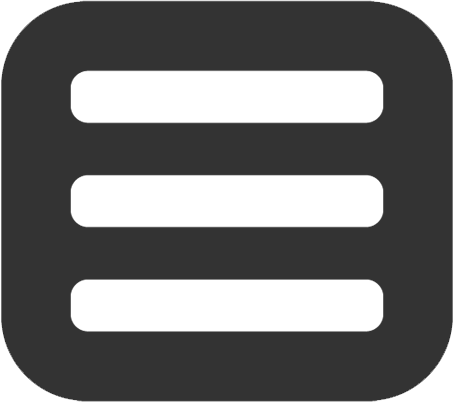上一篇:托福备考第23天——TPO听力材料分析(四阶段)(二)
不听写了,谁听写谁傻逼。到此为止,发现自己的大多数是生词听不出来,所以决定开始听材料,把生词抽出来。
可能有人觉得生词没关系,但是事实上不是这样的。你只要在听力过程中听到一个生词,注意力就容易被吸引过去,你会不自觉地思考这个单词是什么意思,从而忽略了下面的内容。
不仅是生词,有些连读现象也会。(所以经常拿听力材料练耳朵真的有必要)
举个经典例子,capability我听不出来,会听成capble of bility。这很扯淡不是嘛?
其实是我没意识到这个单词会在听力材料里面出现,所以一开始也听不出来。
读写并高亮后的结果:
Listen to part of lecture in a Paleontology class.
As we've discussed, birds are apparently descendants of dinosaurs and shared many commonalities with some dinosaur species, like ...um... feathers and maybe even flight of course egg laid.
OK, so many paleontologists, myself included, have wondered about other similarities between dinosaurs and birds. Since adult dinosaur fossil have sometimes been discovered near or on top of nests, we've been looking at the dinosaur parenting behavior.
Parenting behavior, well, that sounds so gentle and caring. But dinosaurs were ferocious reptiles and reptiles don't take care of their young, do they?
Well, some reptiles incubate their eggs, crocodiles do. And as for popular attitudes towards dinosaurs... well, take the Oviraptor for instance.
In the 1920s, a paleontologist discovered the fossil remains of a small dinosaur near a nest containing eggs. He assumed(震声)the dinosaur was stealing the eggs, so he named it Oviraptor that means egg thief in Latin, which fueled the generally negative public image of such dinosaurs.
But by the 1990s, other experts had convincingly made the case that instead of robbing the nest; the Oviraptor was probably taking care of the eggs. You see, dinosaurs' closest living relatives - birds and crocodiles - display nesting behavior. And dinosaur fossil have been found in postures that we now believe to indicate brooding behavior - that is, sitting on the eggs until they hatch.
So we're curious about the type of care dinosaurs gave to their young. And we'd like to figure out which dinosaur parent, the male or the female gave the care.
Shouldn't the behavior of crocodiles and birds give us some clues then?
Well, with crocodiles, it is the female who guards the nest, and with birds, it depends the species, it can be the male or the female that takes care the eggs, or both. In over 90 percent of all birds species, both parents take care of the eggs and the young birds.
But sometimes it's just the male?
Well, exclusive care by the male parent is much less common, but it does occur. Now for animals other than birds, the care of young by both parents is pretty unusual in the animal kingdom. Male contribute to parental care in fewer than five percent of all mammalian species. It's even less frequent among reptiles.
And exclusive by the male is very rare. So researchers have wondered about the evolution of male parenting behavior in birds for quite some time. And now there's research showing that for some of the birds' dinosaur relatives, it's likely that the male parent was also in charge of taking care of the eggs.
How did they figure that out?
Well, first they looked at clutch volume, that's the number of eggs in the nest of crocodiles, birds and three types of dinosaurs, including Oviraptors that are thought to be closely related to the dinosaur ancestors of birds.
So when researchers examined fossilized remains of nests, they found that the dinosaurs had larger clutch volumes, more eggs in the nests that is, than most of the crocodiles and birds that were studied. But, and this is important, their clutch volumes matched those of birds that have only male parental care. You see, bird species in which only the males take care of the nest tend to have the largest clutches of eggs.
So what's the connection between bird and dinosaur behavior?
Well, researchers now believe, because of this study, that the male parenting behavior of these birds might have its origins in the behavior of dinosaurs.
Based only on evidence of clutch volume size, the number of eggs?
No, there's more. They also examined the fossilized bones of those three types of dinosaurs that were found on or near nests to determine their sex. You see, adult female dinosaur of the kinds that were investigated. This spongy tissue serves as a sourse of calcium for eggshell formation. But when the dinosaur fossils were examined, there were no spongy bone deposits.
Meaning that those dinosaurs on the nests were probably adult males who wouldn't have needed calcium for making eggshells.
Exactly. And then there's this: birds like the kiwi, the ostrich and the emu; they share certain physical characteristics with these dinosaurs.
这篇古生物学的leture讲了鸟类可能是恐龙的后裔,有一个特别的现象——照顾幼崽,是它们的共性。
教授通过举例说明了一个最基本的事实:
尽管多数鸟类都是双亲护巢,但是这不到5%的是雄性护巢的鸟类与恐龙共享着相同的特性,就是,他们的蛋都非常地多。考古人员们发现,只要是蛋特别多的生物物种,大多数是雄性护巢。
由此他们猜想,早亿年前的那种恐龙物种演化成了今天的鸟类,比如kiwi,鸵鸟和鸸这些。
教授表示过,即使是在reptile中,也很少有雄性去照顾蛋。
不认识的单词:
- Paleontology 古生物学 (这个单词其实不认识也无大碍)(你知道该Lecture是讲翼龙的)
- descendants 后裔
- commonalities 共性
- ferocious 凶猛
- ferocious reptiles 凶猛的爬行动物(这里把恐龙说成是爬行动物,应该不是这么理解)(说到恐龙就不得不想到蜥蜴,也是reptile,有人说蜥蜴可能是恐龙的后代,所以这里“爬行动物”的理解应该重点不在“爬行”而在“类蜥蜴”上面)(而且鳄鱼也应该算是reptile)
- incubate 孵化
- crocodiles 鳄鱼
- Oviraptor 窃蛋龙 (只有这一个含义,并不是Google机翻的“监察者”的含义)
- fueled 加油
- convincingly 令人信服
- postures 姿势
- brood 窝
- brooding behavior 孵卵行为
- hatch 孵化
- guards the nest 守卫巢穴
- exclusive 独家的
- mammalian 哺乳动物的
- clutch volume
离合器体积(这里是特指窝卵数量) - clutch 一批物品;一窝蛋
- spongy tissue 海绵组织
- calcium 钙
- kiwi 奇异果 (草,应该不是奇异果罢,这是一种什么鸟类)
- ostrich 鸵鸟
- emu 鸸
值得注意的地道表达方式:
- many xxx, myself included, have wondered about....
- take the xxx for instance
- fueled the generally negative public image of such xxx
- had convincingly made the case that...
- Shouldn't the...
- have the largest clutches of eggs 有着最大的窝卵数量
- Exactly 精确地 (虽然本意是“精确地”,但是我觉得当作为夸奖语句且放在句首位的时候,可以直接理解为“確かに”)

